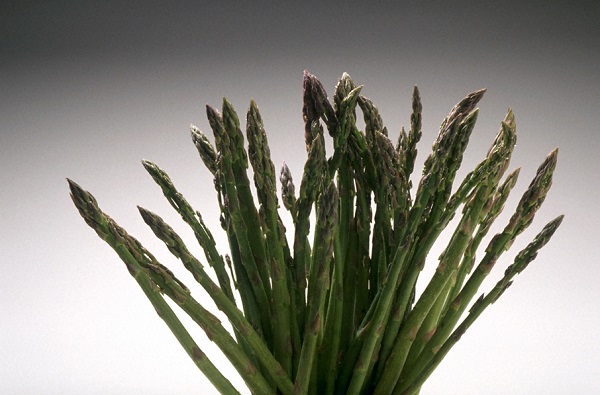
This time of year, always reminds me of the early morning forays my dad would go on in his search for the perfect spears. The first Spring I can recall, I was shocked at how secretive and competitive he would become even with his closest friends, as all of them tried to keep their coveted Asparagus patch to themselves. Even to the point that he would fib to me about what he was looking for as he would begin to slow down and practically drive into the ditch as he craned his neck and squinted his eyes to measure the progress of the cattails that also grew in these coveted spots.
As the season progressed, my rides with him would also become less and less, since he didn’t want to take the chance that one of his buddies might quiz me and I would blurt out the location of one of these patches. Of course, as a small child, I never knew what he was doing, when he would slow down along those long stretches of road, because it was always about the cattails. And, unfortunately, as I began to grow up, the patches that could have been mine by heritage slowly disappeared as urban sprawl took over much of the countryside, but I never lost my appetite for those delectable, tender young sprouts. So, one year on a whim, I decided to try my hand at growing Asparagus in my greenhouse.
I knew that this plant needed to be in well drained soil, not allowed to dry out and needed to be dormant for the winter, so my ground beds would be the perfect place. Even when you grow in a greenhouse, you will experience different micro-climates within your structure. It isn’t unusual for one area of the greenhouse to be overly hot and another to be cool, dark, and damp. With the help of my Min-Max thermometer and a light meter, I began to map out the different areas of my greenhouse and what the typical environment would be like for any given location.
Of course, these micro-environments can also change but if you are diligent in your record keeping and develop a keen eye for subtle changes in the plants, you can usually head off most problems before they become disasters. So, with my notebook in hand, I started amending the bed I had chosen for my patch, with some sandbox sand, plenty of compost and a digital watering meter.
Next, I scoured the seed catalogs that stuff my mailbox (beginning in January) and finally came across some seeds. I wanted to start with seeds, because I surmised that they would stand a better chance of survival than transplants that would have been grown in a completely different (outside) different environment than my greenhouse. Besides, the risk of introducing a pathogen or some other unfriendly into my greenhouse isn’t an option for me.
I was so excited as I watched those little stalks, that look like grass in the beginning, push their way up through the dirt and morph into feathery stalks of green, then transform into miniature stalks of Asparagus. I could barely wait the year it took for them to mature, but they did and by the second year I was enjoying the harvest.
Guidelines for Growing Asparagus in a Greenhouse
Location
Select a location inside the greenhouse that gets plenty of sunlight and has good ventilation. Asparagus plants prefer cool temperatures between 60-70°F, so make sure the greenhouse stays within this temperature range.
Soil Preparation
Asparagus plants prefer well-draining soil with a pH between 6.5-7.5. You can add compost or other organic matter to the soil to improve its quality. Make sure the soil is loose and crumbly.
Planting
Plant the asparagus crowns in pots or containers that are at least 12 inches in diameter and 12 inches deep. Place one crown in each pot, making sure that the tips are facing upwards. Cover the crowns with 2 inches of soil.
Watering
Keep the soil moist but not waterlogged. Asparagus plants require regular watering, especially during the growing season. Make sure to avoid overwatering as this can lead to root rot.
Fertilizing
Asparagus plants require regular fertilization to grow properly. Use a balanced fertilizer every 4-6 weeks during the growing season.
Training
Asparagus plants grow as ferns and need support to stand upright. You can provide a trellis or other support structure for the ferns to climb.
Pollination
Asparagus plants are pollinated by the wind and do not require cross-pollination. Making sure that the plants have access to good ventilation, including a light breeze from a fan can be helpful.
Harvesting
Asparagus spears can be harvested when they are 6-8 inches tall. Use a sharp knife to cut the spears at ground level. Make sure to leave some spears to mature and produce ferns for next year’s harvest.
Paula M. Christensen has 20 years of experience gardening year-round as a hobby greenhouse gardener.
Related Articles & Free Email Newsletter Sign Up
A Flat Arch Greenhouse Offers Efficiency and Versatility
Gable Greenhouses Offer Lots of Growing Space and Structural Stability




Comment here